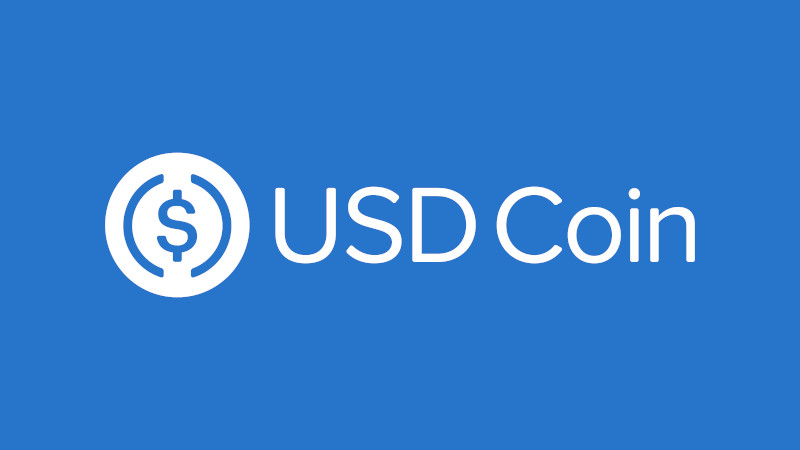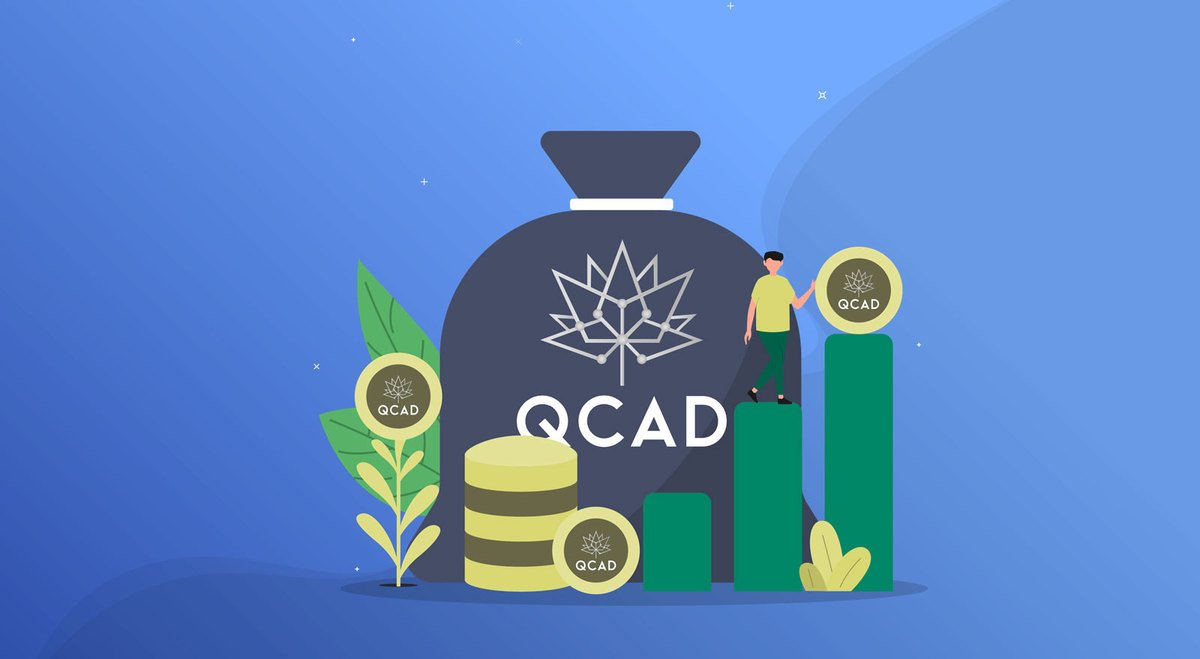Why Stablecoin? How Do Stablecoins Work And Why Are They Growing in Value?
Jack Choros
Content Marketing
Why would anybody ever want to invest in stablecoins considering they don’t really fluctuate in value or guarantee you a profit as an investor? That’s a loaded question and you’re about to get a fully detailed answer.
The growth in market value of stablecoins is a phenomenon grabbing hold of the broader cryptocurrency market over the past year. The early days of stablecoins saw the U.S. Dollar Tether (USDT) token become the first of its kind to gain mass adoption among traders and investors. That happened shortly after the token launched in 2015, giving the market a way to enter and exit volatile digital currencies easily without having to switch back to a fiat currency.
Here we are five years later with access to no less than eight different stablecoins dominating the market and giving investors several options. Two of those coins, USDT and QCAD, are available for purchase at the most trusted bitcoin exchange in Canada, Netcoins. The other two we’re going to cover in this post include the U.S. Dollar Coin (USDC) and Dai.
Outside of these four stablecoins, investors do have a few other options. That said, the four listed above make up a vastly significant chunk of the total stablecoin pie.
With the price of Bitcoin and all other cryptocurrencies increasing in value year-over-year, there is no better time than now to learn what the big names in the world of stablecoins are, how they work and why you should consider holding some of your cryptocurrency capital in them.
How Stablecoins Work
Different stablecoins offer different pros and cons and we’re going to over them in a moment. Regardless of the features, advantages and benefits of each respective coin however, the goal of every stablecoin pegged to a fiat dollar is the same. That is to stay as close to one dollar in value as possible. So how do stablecoins accomplish this?
First of all, they need some kind of currency to hold as collateral for every dollar of cryptocurrency they issue to an investor. The most ‘common-sense’ way to do this is to hold actual fiat dollars in reserve, but that’s not the only way to do things. Dai for example uses collateralized debt to create Dai tokens and ensure they have actual value.
Aside from being tied to fundamental value, stablecoins need to be able to stay as close to one dollar in value as possible. They each have to do this by ensuring that buy and sell orders in the market consistently bring the value of each stablecoin back to one dollar. This means that stablecoins aren’t always exactly worth one dollar. Sometimes they can be worth a little bit more or a little bit less. This means savvy day traders can potentially make money off of that slight volatility. However, even if a stablecoin is worth slightly less or slightly more than one dollar, the price difference is minuscule enough that the broader market still values the stability over any potential inefficiencies that might exist at any given moment.
Now that you have a basic understanding of what stablecoins are and how they work, let’s go through the six most notable stablecoins traders love.

The U.S. Dollar Tether Token
The USDT token it is by far the most popular and most used stablecoin in the world. According to StablecoinStats.com, billions of dollars in Tether tokens exchange hands every 24 hours. Outside of the USDT, the next most popular stablecoin according to trading volume is the U.S. Dollar Coin (USDC). Its trading volume $127 million USD over the last 24 hours, about 1/50 of USDT’s volume. To put it into perspective, the USDT’s trading volume can often exceed $5 billion in a 24-hour span.
USDT benefits from first mover advantage. The token proved the use case for a stablecoin before any other competing projects could do it. The benefit of USDT today is that it is traded at a high volume on nearly every major crypto exchange. This means traders and investors don’t have to worry about slippage should they enter into a more volatile cryptocurrency with a large volume order.
Another positive in favour of using USDT is that while the project initially existed using its own protocol called the Omni Layer Protocol, it currently exists on the Ethereum blockchain as an ERC-20 token. This makes it easier to interact with the many altcoins and decentralized finance projects that live on the Ethereum blockchain.
That doesn’t mean USDT is without controversy. In 2018, it was discovered that many top decision-makers responsible for the development and deployment of USDT are also associated with the crypto exchange Bitfinex. Audits then uncovered that only 74% of the value of USDT is backed by real American dollars. Despite that controversial discovery, the smoke is now clear and USDT remains number one among stablecoins.
U.S. Dollar Coin
One advantage the USDC has over USDT is that it was never built on its own protocol. It lives exclusively on the Ethereum blockchain. Not having to worry about sending the wrong type of USDC to the wrong address is just one reason USDC has gained popularity.
Another reason it’s gaining steam is because USDC is backed by a blockchain holding company called Circle, which is supported by investment bank Goldman Sachs. Coinbase.com is also a backer. Thus, the USDC processes transactions quickly, offers convenience, and the tokens themselves are FDIC insured.
What’s the downside? Well, the way USDC is supported means that it’s not truly decentralized. Would you want to hold a token that gives big companies like Circle and Coinbase the ability to freeze your assets? Although it’s unlikely, it’s definitely possible. Fortunately, there are other stablecoin solutions that are decentralized and can still scale. Enter the Dai steablecoin (DAI).

The DAI Stablecoin
Of all the stablecoins crypto investors might want to hold, DAI provides a very interesting approach to providing investors with a stable option. Dai tokens are not backed by private companies. Instead, they are backed by smart contracts secured using collateralized crypto debt. In short, a debt position locks Ethereum tokens into a smart contract and Dai is created out of that. Dai is built by the same development team that created the MakerDao project. It’s a popular stablecoin that trades in high-volume and there is no central authority that has control over the Dai blockchain.
The downside of using Dai is that it doesn’t trade on nearly as many order books as other stablecoins. It’s also more difficult to change Dai tokens back to fiat money because you still need a crypto-to-fiat onramp like Netcoins to get actual Canadian dollars in your bank account in exchange for your value. This means you would need to trade Dai for another cryptocurrency and then trade that cryptocurrency for Canadian dollars.
QCAD
Another option for exchanging a cryptocurrency for something pegged to Canadian dollars while avoiding transferring to your bank is to use QCAD, Canada’s first stablecoin. You can buy QCAD in Canada right here at Netcoins.
It launched earlier in 2020 and introduced $150,000 Canadian worth of cryptocurrency to the market in a format that we Canadians haven’t had the benefit of until this point. QCAD is really the by-product of two private companies. Stablecorp, the company behind the 3iQ crypto investing brand, and a leading blockchain development firm called Mavennet.
The most interesting thing about the QCAD token is that it achieves stability in a way that’s different from any other stablecoin. Instead of using bots to process high volumes of transactions that keep the value of the token at one dollar or using a smart contract to do it the way DAI does, QCAD uses a network of Authorized Dealers who buy and sell QCAD tokens at the cost of one dollar each. Any entity can apply to be an Authorized Dealer, but they must prove their organization possesses top-tier managers with backgrounds in banking, payments and technology in order to be eligible.
This means QCAD gives you the crypto investor a technically sound, stable and highly liquid Canadian stablecoin to invest in where every stakeholder backing it has to go through an extensive vetting process.

The Future of Stablecoins and Cryptocurrencies Pegged to Other Assets
Stablecoins are undoubtedly becoming more popular as safe haven investments within the crypto world affording progressive investors with the ability to stay in the market without having to go back to fiat currency or risk losing capital due to volatility or a steep decline.
But there is another reason the future of stablecoins is bright. It’s because the whole concept proves that pegging a cryptocurrency to a real-world asset is a viable endeavour. Paxos is now using the principles of a stablecoin to offer investors a cryptocurrency pegged to the real-world value gold. More and more kinds of these cryptocurrency projects will come out of the woodwork and offer investors even more reason to leave the fiat world behind.
If you’ve seen, heard and read enough and you’re ready to start doing that, buy the Bitcoin, USDT, QCAD token, Ethereum or Litecoin at a cryptocurrency exchange based out of Vancouver you can trust. That’s Netcoins.
Here’s to achieving stability in the volatile world that is cryptocurrency.
Written by: Jack Choros
Writer, content marketing at Netcoins.